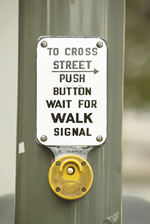Conversational data gathered and consolidated. (Understanding belief: what it is? Where all does it occur? How it occurs? How people perceive and respond to it?)
People spoken to :
An astrologer, a homeopath, a transactional psychotherapist
---------------------------------------------
On 23rd July : A chat with Venkat Shastri – Astrologer, Yelahanka New Town
What is your education?
A retired government servant. Attended college PUC (Intermediate college)
What is your profession?
Now, after retirement “in order to kill time” he took up his family tradition profession of astrological forecasting – to predict if possibly the question thrown at him will be possible or not.
For how many years have you been doing this?
Since 1952 till date
Who taught him to do this?
A two day workshop from his guru in order to understand what exactly one needs to do this and there onwards he has self-learning from books and learning from much wiser (older experienced pple) and now what counts the most is his experience, knowledge and his faith in god.
Who gives him the answers to the questions asked to him?
He uses the calender – the Panchanga which has all the dates from 1782 till date for answers. But he also spoke of this ‘connection with God’ where he said a lot of answers are given to him by God. This connection he attains through deep meditation.
Points through Chit Chat: He said that a lot of methods exist in the world if one is seeking for answers. One of the methods he believes in and has faith in is praying to God.
God here may refer to a spiritual connection.
His methods are godly approved, not science approved.
Possible placebo? The story goes like this: A doctor came to him once and he was wearing rings and he complained about the sleeplessness and a severe headache. The astrologer asked him to remove a particular ring and asked him to sit calmly for ten minutes. After 10 min, he doctor replied that he was feeling much better.
Stones usually carry a cosmic energy which may clash with one’s own energy resulting in certain disturbances in the body.
OBSERVATION/Inferences:
In this case, it was more like the doctor was expected to feel better/relief after removing the ring and the result was positive.




 The advent of computer-controlled traffic signals make the
The advent of computer-controlled traffic signals make the